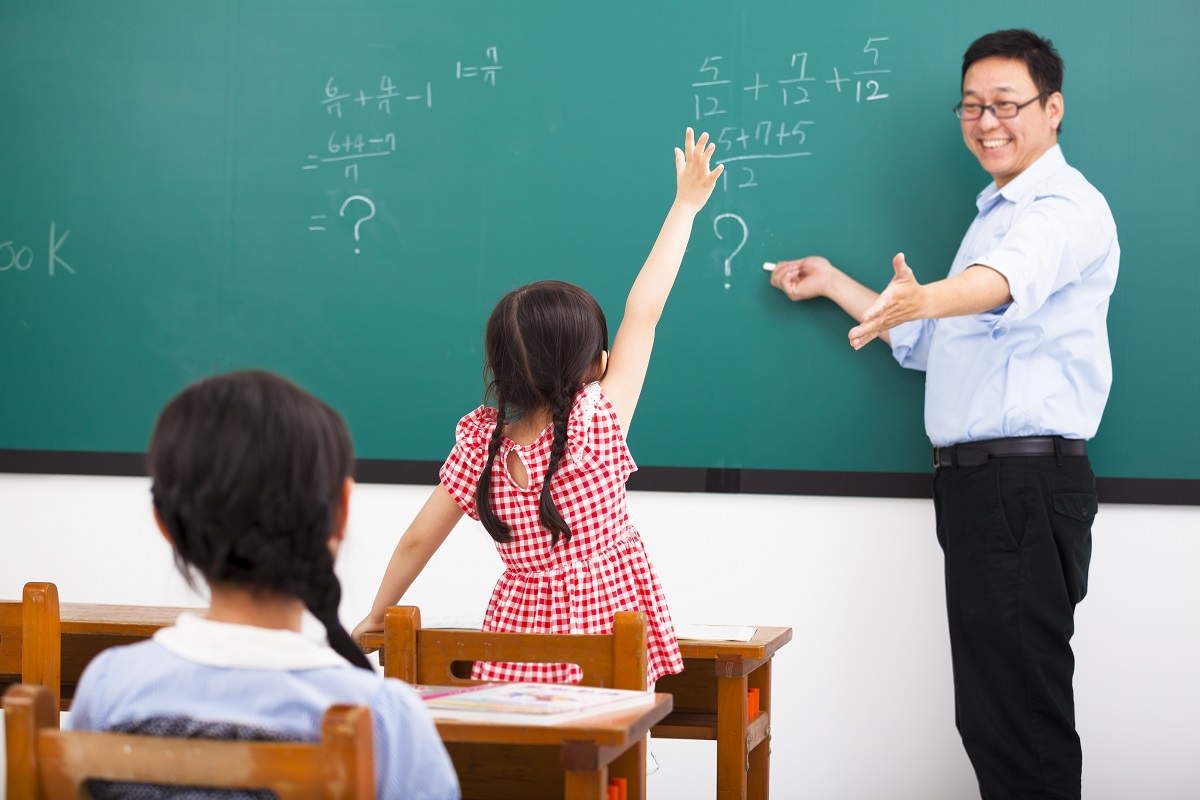Personalized Primary Science Tuition Singapore to Cater to Your Child’s Needs
Personalized Primary Science Tuition Singapore to Cater to Your Child’s Needs
Blog Article
A Comprehensive Guide to the Various Discovering Methods in Key Science Instruction
The expedition of diverse discovering techniques in main science direction provides a possibility for instructors to enhance trainee engagement and comprehension dramatically. By examining hands-on discovering strategies, inquiry-based methods, and collective approaches, we can recognize reliable techniques that cater to different finding out designs.

Hands-On Discovering Strategies
Hands-on knowing strategies play an essential duty in primary scientific research direction, engaging pupils in energetic exploration and experimentation. These techniques allow students to connect straight with phenomena and products, cultivating a deeper understanding of clinical principles. By making use of manipulatives, models, and real-life experiments, instructors develop an atmosphere where pupils can observe, assume, and check their ideas.
Such methods not just boost comprehension however likewise cultivate critical reasoning and problem-solving abilities. When students participate in tasks like developing simple makers, growing seeds, or performing chain reactions, they are urged to ask inquiries and seek solutions with their very own monitorings. This experiential technique helps to demystify complex clinical concepts, making them extra easily accessible and relatable.
In addition, hands-on discovering advertises cooperation among peers, as students typically work in groups to carry out experiments or share findings. This teamwork not only enhances their understanding experience but likewise establishes vital social skills. Eventually, incorporating hands-on methods in main scientific research guideline promotes a lifelong love of understanding and curiosity regarding the environment, laying a solid foundation for future academic quests in science and beyond.
Inquiry-Based Knowing
Inquiry-based discovering is a training strategy that urges trainees to ask concerns, explore phenomena, and build their own understanding of scientific principles. This approach changes the emphasis from standard teacher-led guideline to a much more student-centered experience, where students take the effort in their educational journey. By promoting curiosity, inquiry-based discovering promotes deeper engagement with the material, allowing pupils to explore subjects in a meaningful context.
In method, this technique commonly includes hands-on experiments, monitorings, and critical reasoning tasks that straighten very closely with the clinical technique. Trainees are encouraged to create hypotheses, style investigations, and analyze information, which cultivates essential skills such as logical and problem-solving thinking. The function of the educator in this structure is to help with exploration, guiding trainees with the query procedure while encouraging independent thought and cooperation.
Moreover, inquiry-based learning nurtures a feeling of possession over the knowing procedure, encouraging students to pursue knowledge actively. This approach not just boosts understanding of scientific principles however likewise promotes a lifelong love for discovering, furnishing trainees with the abilities necessary to navigate an increasingly complex world.
Collaborative Knowing Approaches
Collective knowing approaches empower trainees to take part in purposeful communications with peers, cultivating a common duty for their academic results. In primary science instruction, these approaches encourage learners to interact to explore clinical concepts, address problems, and carry out experiments (primary science tuition Singapore). By taking part in team activities, trainees can leverage diverse point of views, permitting for richer understanding and retention of clinical expertise
One secret facet of joint learning is the focus on interaction abilities. Trainees have to verbalize their thoughts, pay attention actively to others, and bargain ideas, every one of which are critical proficiencies in both real-world and scholastic contexts. This social communication not only boosts their understanding of scientific principles yet likewise get redirected here promotes team effort and problem resolution abilities.
When trainees see the value of their contributions within a group, they are extra most likely to take possession of their understanding trip. On the whole, integrating joint knowing techniques in primary scientific research instruction cultivates a vibrant learning atmosphere that prepares pupils his response for future academic and social difficulties.
Innovation Combination in Scientific Research
The combination of technology in primary science direction enhances finding out experiences by supplying ingenious devices and sources that sustain numerous teaching methodologies, including joint understanding - primary science tuition Singapore. The use of electronic platforms, simulations, and interactive applications allows students to engage deeply with scientific ideas, promoting a more hands-on approach to discovering
Digital laboratories, as an example, allow learners to conduct experiments safely and successfully, promoting inquiry-based learning. These tools can mimic real-world scientific circumstances, permitting pupils to visualize complicated procedures that would be difficult to replicate in a traditional classroom setting. In addition, innovation fosters interaction and cooperation among students, as they can share findings and collaborate on tasks via on-line systems.
Furthermore, multimedia discussions and instructional videos can enhance lessons by satisfying varied learning designs, making abstract concepts extra easily accessible. Data analysis devices additionally equip trainees to gather and analyze clinical data, strengthening vital assuming skills. Generally, the calculated unification of innovation in main science direction not only enhances interaction but additionally prepares trainees for a highly sophisticated society, outfitting them with essential abilities for future scientific undertakings.
Distinguished Guideline Methods
Differentiated guideline methods are essential for addressing the varied needs of learners in key science education and learning. These techniques enable instructors to customize their teaching approaches to accommodate varying capacities, passions, and learning styles within the class. By employing distinguished guideline, teachers can produce a comprehensive atmosphere that promotes interaction and enhances understanding of clinical concepts.
One efficient method is to utilize adaptable grouping, which enables pupils to collaborate with peers at comparable skill degrees or with varying perspectives. This method motivates peer discovering and advertises vital reasoning. In addition, providing options in jobs can encourage pupils, allowing them to pick projects that resonate with their passions while still satisfying weblink curricular objectives.
Moreover, incorporating tiered assignments is another useful technique. By creating tasks with varying degrees of intricacy, educators can make certain that all pupils are suitably tested, regardless of their proficiency. Making use of developmental analyses to determine comprehending further makes it possible for educators to change their instructional techniques dynamically, making certain that each student receives the support they require.
Eventually, executing distinguished guideline methods in key scientific research education not only enhances pupil knowing outcomes however also cultivates an enthusiasm for science, preparing students for future scholastic quests.

Verdict
In recap, efficient primary scientific research guideline demands a complex method that includes hands-on discovering, inquiry-based methods, and collective strategies. The assimilation of technology and separated guideline better provides to varied knowing styles, fostering an atmosphere favorable to exploration and crucial reasoning. By implementing these methods, teachers can enhance pupil involvement and understanding, inevitably nurturing a lifelong enthusiasm for science and query. Such thorough techniques are necessary for creating educated and interested future scientists.
The expedition of varied discovering approaches in key scientific research guideline offers a chance for educators to boost student involvement and comprehension dramatically.Hands-on knowing methods play a pivotal role in primary science direction, involving pupils in energetic exploration and trial and error.Inquiry-based knowing is an educational method that encourages pupils to ask questions, check out sensations, and build their very own understanding of scientific ideas.Collective understanding strategies empower pupils to engage in purposeful communications with peers, cultivating a shared obligation for their educational results. Generally, incorporating collaborative understanding techniques in primary science direction grows a vibrant knowing environment that prepares trainees for future scholastic and social obstacles.
Report this page